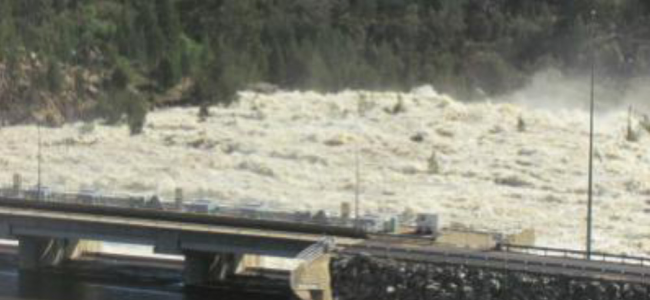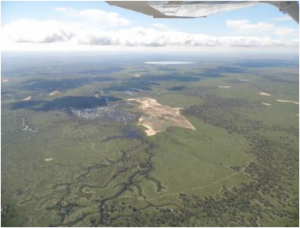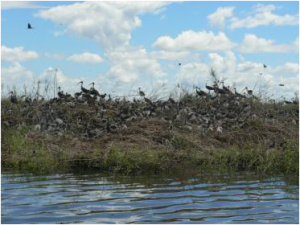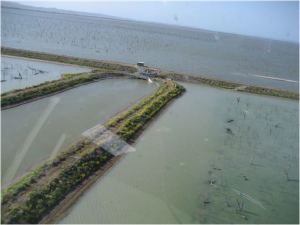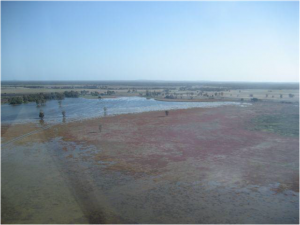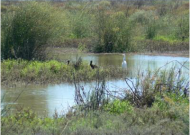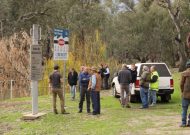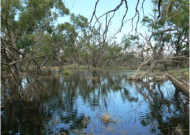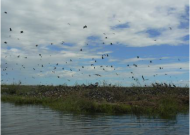
TRANSLUCENT FLOWS
Translucency media release – 7 June 2012
State Water has announced a rising river alert for the Lachlan River, due to an environmental release from Wyangala Dam – the first since 2001.Levels in the Lachlan River are expected to rise due to inflows from tributaries downstream of Wyangala Dam and increases in discharge from Wyangala Dam. Water Delivery Manager, Central valleys, Sri Sritharan urged water users in the area to monitor their stock and equipment.
“The river sections which are likely to be affected will be downstream of Wyangala Dam, downstream of Gooloogong and downstream of Jemalong” said Mr Sritharan. “We are advising that water users in these areas to remain vigilant and monitor their pump installations and any other equipment” he said.
The releases are environmental flows under the water sharing plan for the Lachlan River. The rules provide for a more natural flow regime within the river system by allowing some natural dam inflows to pass down the river for environmental benefit.
Translucency Rules
The Lachlan Water Sharing Plan (WSP) sets out the rules determining the availability and accounting for the translucent component of environmental water. These rules require any flows into Wyangala Dam, between 15 May and 15 November each year, sufficient to produce a flow downstream of Lake Brewster of 3500–8000 ML/day, be allowed to continue down the river, as would have occurred prior to the Dam’s construction. These translucent flows may only occur after certain other conditions regarding inflows to Wyangala are met.
The implementation of the translucency rules requires the documentation of the benefits of translucent releases, with these benfits being communicated to the general community.
Delivered Volumes
The latest translucent event commenced on 8 June 2012 with an estimated total dam inflow of 22,000 ML and and estimated dam release of 12,000 ML. Tributary inflows downstream of the dam were estimated at 2,500 ML. The peak flow at Forbes was expected to reach 6,000 ML/day and 4,500 ML/day at Brewster Weir.
This event was anticipated to last for 3 days, depending on follow-up rainfall in the catchment.
For more information regarding river heights refer to the NSW Water Information website, http://waterinfo.nsw.gov.au.
Environmental Outcomes
The translucency rule was introduced to provide more natural flows for the Lachlan downstream of the Dam. The hydrological and seasonal triggers established by the WSP ensure that the key ecological riverine and floodplain features of the Lachlan River are targeted during translucent releases. Thereby enhancing outcomes for wetland flooding, waterbird and native fish breeding.
Changes to the Draft Basin Plan
On the 28th May the Murray–Darling Basin Authority (MDBA) publicly announced that the revised Basin Plan had been sent to ministers as part of the next step in the process of developing a Plan for the Murray–Darling Basin.The MDBA also released a report detailing the changes that have been made to the draft Plan based on submissions received during the consultation period.
The MDBA have been consulting communities and representative groups on the development of a Basin Plan over the last 12 months. During this consultation the MDBA has responded to calls for the Plan to be more flexible. They have also determined that a water recovery target of 2,750 GL/y as a long-term average is still appropriate but will be reviewing this decision in 2015.
Revised Basin Plan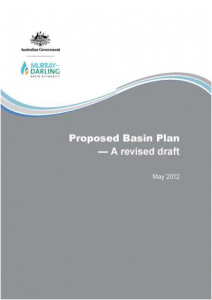
The latest version of the Plan, titled the ‘Proposed Basin Plan – A Revised Draft’, now enters the ministerial and parliamentary process. It is required to be presented to all Basin water ministers for consideration for a maximum of six weeks, as stipulated by the Water Act. Following this, the Basin Plan will be given to the Federal Water Minister.
Documents released with the revised Basin Plan include:
-
The transmission letter to Basin State Ministers
-
Proposed Basin Plan – a revised draft
-
Guideline for the method to determine priorities for applying environmental water
-
The proposed Basin Plan consultation report
-
The socio–economic implications of the proposed Basin Plan.
All documents can be downloaded from:
http://www.mdba.gov.au/proposed-basin-plan/proposed-basin-plan-revised
Available Environmental Water as at June 2012
The table below indicates volumes of environmental water available for use from June 2012. The amount of water that can be taken this water year is 100% of entitlements (121,818 ML GS and 1,733 ML HS) less any volumes already used this year (27,551 ML) and water traded from the Riverbank account (2,000 ML GS). Unused allocation will be carried over to the 2012/13 water year. Decisions regarding the use of licenced water for environmental purposes will be informed by the amount of water available, the the need of priority water-dependent targets and antecedent climatic conditions. As described in the Transluency item, Planned environmental water delivery is guided by rules outlined in the Lachlan Water Sharing Plan.
Summary of envoronmental water available as of June 2012
|
Type |
Volume in Account |
Volume used this water year |
|
Commonwealth licenced water – for environmental purposes |
115,938 ML |
27,551 ML |
|
Riverbank |
33,413 ML |
|
|
Lake Brewster Adaptive Environmental Water |
16,320 ML |
0 ML |
|
Planned Environmental Water |
20,000 ML ECA; 20,000 ML WQA |
0 ML |
Lachlan Catchment Management Authority Catcment Action Plan Upgrade
(Source: Lachlan CMA website http://www.lachlan.cma.nsw.gov.au/cap-2012/whatisthecapupgrade.aspx )
Catchment Management Authorities (CMAs) across the state are currently reviewing and upgrading their Catchment Action Plans. The existing Catchment Action Plans were developed in 2004-05 and knowledge, information and data has advanced significantly since then. The Catchment Action Plan upgrades will allow this new information to be considered against community values to ensure a collaborative plan is developed and implemented.
The new Catchment Action Plan will be a whole of government and whole of community plan. The task of facilitating the upgrade has been given to CMAs, however the final plan will reflect and encourage investment from government agencies, non government organisations and community members including identifying targets for relevant collaborators.
The Lachlan CMA are working collaboratively towards improving the health of the Lachlan catchment landscape. The upgrade will ensure the CMA are on track to achieving healthier landscapes across the Lachlan catchment over the next 5 years and to ensure we are all working together towards common goals.
The vision for the Lachlan CMA is to develop a Catchment Action Plan which is – a whole of catchment tool to encourage, guide and attract investment to catchment targets and priority areas in natural resource management.
PROJECT UPDATE
Lake Brewster PhD study
To investigate the success of the management regime developed for Lake Brewster, a partnership between the Lachlan CMA, State Water and the Institute of Land, Water and Society has been developed to investigate ecological outcomes as a basis for supporting ongoing adaptive management. The Institute is an accredited Centre of Research Excellence within Charles Sturt University with the aim of undertaking “internationally recognised and integrated research in social and environmental sustainability to enhance the livelihoods and lifestyles of people in rural and regional areas.
In consultation with the Lachlan CMA, State Water, Lake Brewster Technical Advisory Group and the Institute for Land, Water and Society, a project to investigate the ecological responses of aquatic vegetation to the environmental water regime developed for the Lake will be undertaken by a PhD student over the next three years.
It is hoped this project will lead to an improved adaptive management process for Lake Brewster through:
- Increased understanding of ecological responses to management and infrastructure changes within Lake Brewster;
- An effective Monitoring and Evaluation Plan;
- Better informed management;
- Improved awareness and developing links with international water managers.
